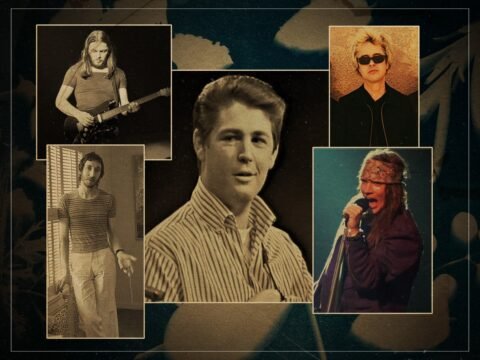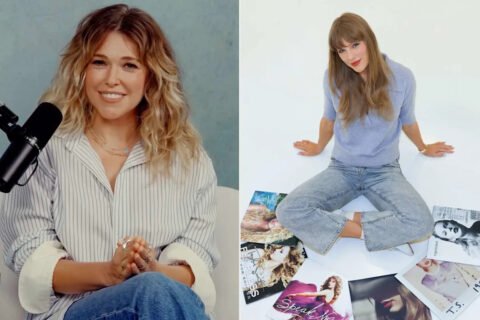“I couldn’t sleep for days,” Shetty says. “I stopped writing. I felt like a fraud.” To numb the unease, he turned to alcohol, spinning between bursts of inspiration and crushing self-doubt. Shetty’s experience is far from unusual. While artists often chase visibility and acclaim, the very spotlight they seek can become corrosive—fuelling anxiety, eroding self-worth, and even reshaping their creative drive. Netflix’s 2024 documentary Yo Yo Honey Singh: Famous touched on the pressures of celebrity, but stopped short of exploring a deeper terrain: how recognition, even in small doses, rewires the artistic psyche.
Psychologists often describe this as the “fragile ego”, which is a volatile mix of vulnerability, validation-seeking, and identity collapse that can spark brilliance but also sow despair.
Fragile ego vs Confidence
Not all experts are comfortable with the term. Pratistha Trivedi Mirza, senior clinical psychologist at Amaha Health, a mental health organisation based in Mumbai, argues that “fragile ego” oversimplifies a complex reality. Creative work makes identity porous: who an artist is and what they make become tightly fused. As a result, even professional setbacks are experienced as personal failures. Others describe this as the double bind of creativity. Shevantika Nanda, a Gurugram-based clinical psychologist, notes that artists often tether their sense of self to public opinion. “External validation becomes oxygen,” she says. Confidence, by contrast, allows criticism to land without implosion. Fragility distorts ambition, morphing into superiority or frantic short-term gratification.
Anshuma Kshetrapal, a Delhi-based creative arts psychotherapist, sees the roots of this fragility in childhood. Many of her clients, she says, grew up under constant criticism or surveillance, learning early that they were only worthy when others approved. This conditioning, when coupled with the high visibility of an artistic career, sets the stage for a lifelong struggle with self-worth. Taken together, the difference between fragility and confidence lies not in ambition but in grounding. Confidence is broad-based, drawing on multiple aspects of self. Fragility, by contrast, is narrow, tethered almost entirely to applause, says Kshetrapal.
For Delhi rapper Ayesha Singhal, 22, everything shifted the day a clip of her freestyle went viral in 2023. “Suddenly I was ‘the next big thing.’ At first I was ecstatic. But soon every verse had to ‘go viral.’ I wasn’t writing for myself anymore and I froze,” she says.
Psychologists see this pattern often. Mirza says before recognition, artists are usually driven by passion and expression. With success, motivation shifts outward: the outcomes such as followers, applause, financial perks replace the joy of process. That makes them fragile. Nanda points out that even small-scale recognition can destabilise self-esteem. For some, praise arrives faster than skill, inflating the ego. For others, success raises expectations so high that self-doubt and impostor syndrome take over.
Kshetrapal adds that this is often when art becomes product rather than process. Instead of writing to sublimate emotion, artists write for likes. The inner critic begins to dictate every move: Will this trend? Will they like me? It’s at this point, she says, that fragility calcifies into something harder to undo. The Indian context sharpens these dynamics further. As Singhal notes, recognition doesn’t just change an artist’s relationship with their work, but it alters how peers, communities, and even families treat them. Pressure mounts. Applause that once inspired quickly becomes a demand.

View Full Image
Fame as amplifier
If early success sets the stage, fame turns up the volume. “Fame magnifies everything,” Mirza says. It introduces the so-called “spotlight effect,” where artists feel constantly observed and judged. For those already prone to anxiety or perfectionism, that gaze only worsens symptoms. Nanda describes fame as stripping away the scaffolding of self. When numbers drop, it’s not just popularity that dips—it feels like the entire identity has collapsed. With fame as the only scaffolding, artists are left feeling exposed and naked. Kshetrapal takes it further, calling fame a substitute for love. “When recognition disappears, the body experiences famine,” she explains. Artists turn to substances, not for indulgence but survival, because silence feels unbearable.
Layered on top of this is financial instability. India’s urban artists often juggle precarity with visibility: they are seen, even celebrated, yet remain insecure. That paradox intensifies the psychological strain. The result is predictable: heightened risk of anxiety, depression, burnout, substance misuse, and even suicide. A recent study published by the Goldsmiths University in London found musicians at higher suicide risk than the general population.
Relationships at stake
This fragility doesn’t just affect art, but it ripples into relationships. Mirza explains the concept of contingency of self-worth: when esteem rises and falls on public approval, both mood and motivation become volatile. In art, where work is deeply personal, praise feels like affirmation; criticism feels like annihilation. Nanda sees the creative toll most clearly. Fear of rejection often pushes artists to play it safe, recycling ideas instead of innovating. Collaboration suffers too, as competition, mistrust, and inadequacy creep in. The result is isolation, even in a crowded scene.
For Kshetrapal, the substitution of love with applause is especially damaging. Artists, she says, begin to equate recognition with affection. The desperation to sustain one mirrors the desperation to sustain the other. But when fans retreat or collaborators step back, the collapse feels not just professional but personal. In high-pressure urban environments, this fragility even seeps into intimate relationships. Survival pressures make love transactional. Partners become lifelines rather than choices, eroding intimacy and reinforcing the cycle of fragility.
Unchecked, ego fragility extracts a steep price. Mirza points to isolation, stagnation, and burnout. Fear of criticism pushes artists to withdraw, while constant self-monitoring drains their emotional reserves. Nanda highlights how over-dependence on validation drives anxiety and depression. Persistent self-doubt erodes trust, fuels rejection sensitivity, and damages the creative process.
Kshetrapal warns of what she calls the “over-idealisation of pain.” Many artists come to believe that suffering is their only valuable trait. They cling to it because others resonate with it, shutting down coping skills and cutting off access to healthier parts of themselves. Burnout becomes inevitable. The fragility that fuels art also, paradoxically, seeds destruction.
Sensitivity as strength
Yet this same sensitivity can also be a gift. Mirza notes that heightened sensitivity allows artists to notice subtleties others miss, translating intensity into powerful work. Nanda agrees, pointing out that empathy, insight, and attention to detail often emerge from this fragility. When channelled outward into art, rather than inward as self-criticism, it enriches creative output. Kshetrapal stresses that vulnerability itself is not the danger. The risk lies in losing touch with “resourced parts” of the self—the coping, reflective, balanced aspects. With the right support, she says, sensitivity remains fertile ground. Fragility, in the right conditions, sharpens art instead of shattering the artist.
Coping and community
To cope, Mirza recommends diversification: grounding self-worth not only in applause but also in personal growth, relationships, and exploration. Journaling, mindfulness, therapy, and staging feedback, first in safe spaces, then publicly, can help balance ego and resilience. Nanda emphasises the need for boundaries. Artists must learn to separate themselves from work. Supportive communities, she argues, provide honest feedback and safe collaboration.
Kshetrapal focuses on therapy’s role in reconnecting artists with their coping strengths, not just their vulnerabilities. Fans, too, have a role to play. Mirza urges audiences to avoid idolisation or cancel culture. Instead of keeping score, she says, engage reflectively: normalise the humanity of artists, and ask not how loudly you clap, but how deeply the work moved you. Resilience, in other words, is a collective project.
The lived battle
For Shetty, therapy offered a turning point. “My therapist helped me see I am not my music. That saved me. I still read comments, but I also write songs just for myself which are reminders of process, not product.” For Ayesha Singhal, community was the anchor. She joined a Delhi rap collective. “We freestyle weekly—no cameras, no hashtags. Just a raw expression. It keeps me sane.”
For Chennai-based Meera Devidayal, 38, a classical dancer whose career peaked a decade ago, the challenge was fading fame. “When the calls stopped coming, I felt invisible. For years I thought: if I’m not on stage, who am I?” she says. Therapy helped her reframe her identity. Today she mentors younger dancers, which she describes as continuity rather than collapse.
Their stories echo what psychologists emphasise: fragility is not a flaw but a predictable stress response when identity is tethered to visibility. Resilience lies in decoupling worth from applause, finding grounding in community, and reclaiming art as process. Artists live on a knife’s edge: the same fragility that makes them vulnerable also fuels their brilliance. The gaze of the audience can be intoxicating, but also imprisoning. Honey Singh’s trajectory, like Shetty’s, Singhal’s and Devidayal’s, reminds us of a quieter truth: behind the applause is a human being wrestling with one unshakable question: Am I enough, even when unseen?
Divya Naik is an independent writer based in Mumbai.





